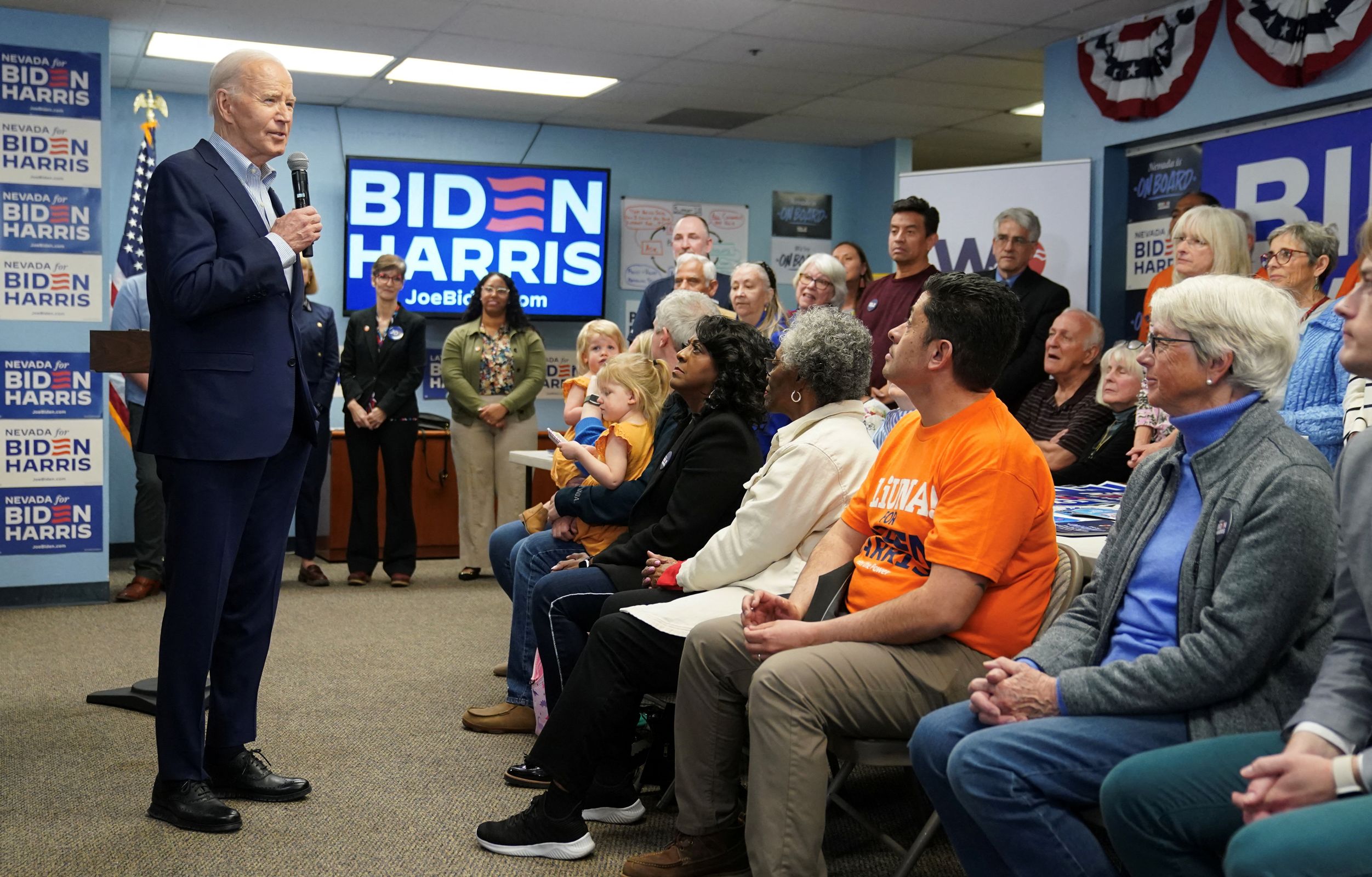At the heart of President Joe Biden’s reelection campaign headquarters, a sign proudly displays a unique set of metrics: Pennsylvania, 24; Michigan, 30; Wisconsin, 44. These figures represent the growing number of campaign offices already established in these crucial battleground states, shining a light on the campaign’s strategic evolution since the last election.
“Our objective at this stage is to construct a robust infrastructure across all potential victory paths,” said Dan Kanninen, the Biden campaign’s director for battleground states. “We aim to leverage our advantage against Donald Trump, who has yet to establish a significant field presence in these states.”
Four years after the pandemic disrupted the 2020 presidential election, Kanninen and his expanding team of advisors are sending a clear message: This is not a repeat of Biden’s basement campaign. The campaign now boasts a vast organization, blending physical offices with innovative technology to connect with voters, a stark contrast to Biden’s virtual campaign in 2020.
“We’re not tied up in court,” Kanninen said, referring to Trump’s ongoing legal issues in New York. “Our focus is on building a strong team, establishing a solid infrastructure, and leveraging our financial advantage.”
Back to ‘the old-fashioned way’
Despite featuring the same two major candidates and a similar map of battleground states as in 2020, this race is far from a rerun. A variety of distinct issues are driving the conversation, and the scale of the Biden organization is incomparable to its size four years ago.
“We’re going back to the basics, knocking on doors the old-fashioned way,” Biden told volunteers and staffers at a Democratic office in Milwaukee. As he tours the country, the president frequently visits field offices that didn’t exist four years ago, often expressing confidence in the elaborate operation that bears his name.
The traditional campaign office is making a comeback – with 133 offices and counting – much to the delight of loyal Biden volunteers. “During the 2020 election, we canvassed, knocking on doors, maintaining social distance. Now, it’s nice to know we’ll be able to have face-to-face contact,” said Ann Glass, a Biden volunteer.
Lessons learned
The Biden campaign is working to create a hybrid system of campaigning – combining lessons learned before and after the pandemic – to take political organizing to the next level. One of those lessons: the importance of establishing more and better campaign offices.
“I’m blown away by how beautiful it is,” Julie Chavez Rodriguez, Biden’s campaign manager, said at the opening of a downtown Philadelphia office. “If the president was here, he often says he hasn’t had campaign offices this nice, but we know it’s critical.”
For all of the challenges facing Biden, who is locked in a remarkably difficult contest with Trump, a robust organization is designed to help level the playing field and extend an advantage to the president. Even among Democrats who have been privately critical of Biden, the size of the campaign operation is seen as a leading attribute.
The principal campaign committee for Biden entered April with $88.5 million in its war chest, federal election records show, while Trump’s main campaign account had $45.1 million. The disparity underscores the vastly different campaign structures the rivals are building.
“The advantage that we have both on time – we’re not sitting in court – and infrastructure and the cash advantage is something that we want to push everywhere,” Kanninen said. “This is not something that you can do overnight. It takes months to do properly, and the Trump campaign cannot buy that time back.”
Contributor: Alison Main, CNN

